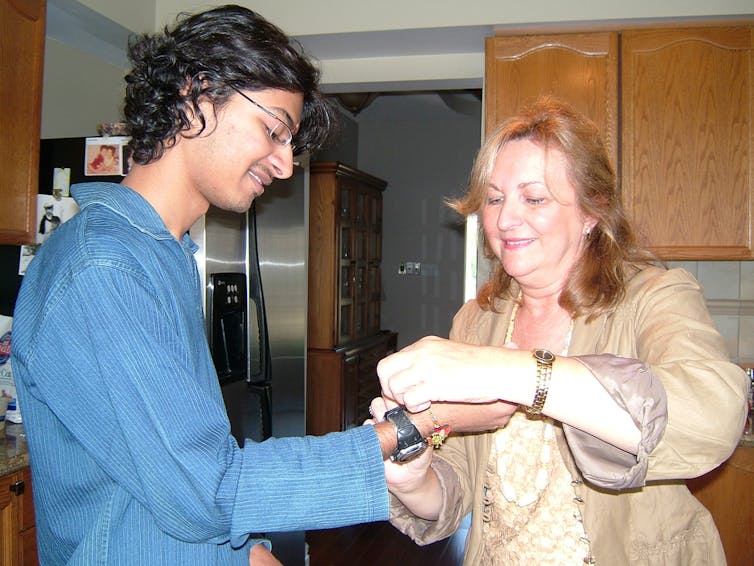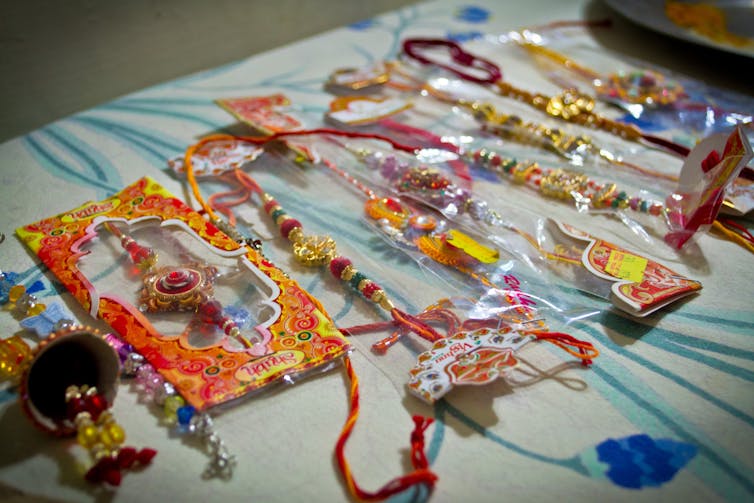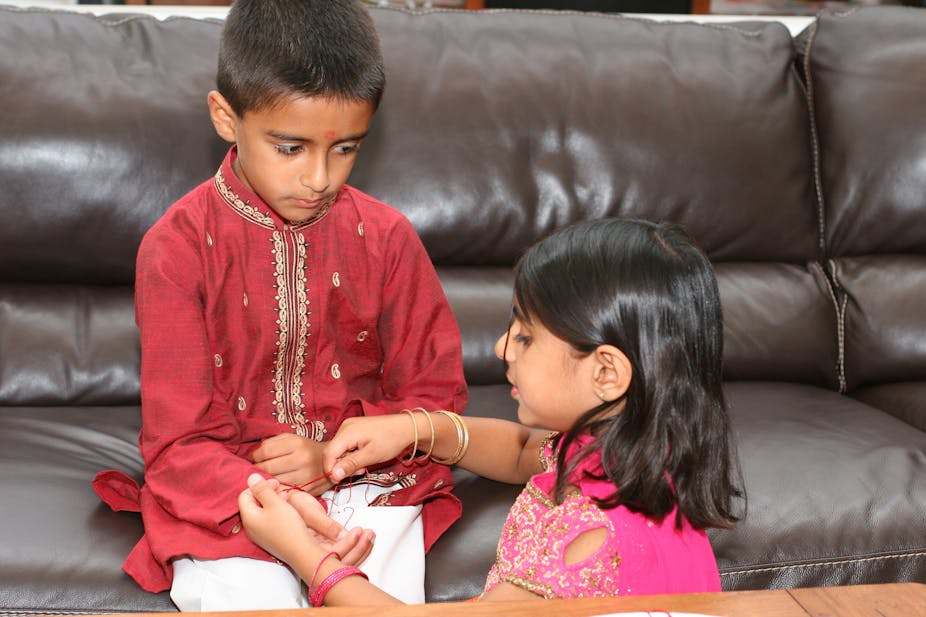This year, Wednesday, Aug. 14 marks one of the most important celebrations for Hindus throughout the world: Rakshabandhan, a ceremony honoring the bond between sisters and brothers. The date of Rakshabandan varies from year to year since Hindus follow a lunar calendar for religious celebrations.
During Rakshabandhan, sisters tie a protective thread around the right wrist of their brothers. Brothers give gifts and promise protection to their sisters. The word “rakshabandhan” means “tie of protection.”
The festival affirms the crucial importance of family in the Hindu tradition. But many of my Hindu friends also are quick to add that the festival is also about Hinduism’s openness. For example, one of the most popular legends surrounding Rakshabandhan concerns the connection between a Hindu queen and a Muslim king.
Sisters not only tie their brothers as defined by blood relationship, but also those with whom they have a very close family-like relationship. In fact, as an American Catholic and a scholar of comparative religions, I myself have been “tied the thread” during Rakshabandhan.
Stories of the Rakhi
The “rakhi,” a thread or amulet, is an ancient means of protection in Hindu culture. One of the sacred Hindu books, the Bhavishya Purana, tells the story of Indra, who was fighting a losing battle against demons. When his wife, Indrani, tied a special thread to his wrist, he returned to battle and triumphed.
Today in North India, the most widely repeated legend related to Rakshbandhan concerns Rani Karnavati, a 16th-century queen of the city of Chittorgarh in the western Indian state of Rajasthan, and the Muslim Mughal Emperor Humayun.
The legend goes that Chittorgarh was threatened by a neighboring sultan and Rani Karnavati knew that her troops could not prevail. And so, she sent a rakhi to the even more powerful Mughal emperor. Humayun and Karnavati became brother and sister and he sent troops to defend her.
The historical veracity of this story remains a matter of debate among scholars. But it is still part of popular culture in India, despite the fact that Humayun’s troops did not arrive in time to prevent Karnavati and the rest of Chittorgarh’s female inhabitants from ritually burning themselves alive to avoid capture.

Nonetheless, the festival of Rakshabandhan has been presented as an expression of solidarity between Hindus and Muslims who have a long and tortured history on the subcontinent. For example, India’s Nobel Laureate poet Rabindranath Tagore advocated that Hindus and Muslims tie a thread on each other during the festival. He also used the image of the rakhi in his poems, such as one where he describes the “shadows and lights” of the Earth as lying like “a rakhi-band on future’s hand.”
The ritual of Rakshabandhan
One of the crucial aspects of the celebration of Rakshabandhan is that it is not limited to the immediate family or to those who have a similar religious identity. Even an American Catholic like me can be honored in the festival.
When I first went to India 30 years ago, I lived with a Hindu family in the Hindu holy city of Varanasi. Very quickly, I became accepted as a real member of the family with attendant responsibilities. I was a brother to the three sons, Ajay, Sanjay and Amit; and also to the two sisters, Hema and Suchita.

Our family relationship has endured over 30 years. And when I am in India during Rakshabandhan, I am “tied” a rakhi by Hema and Suchita as I was all those years ago.
The ceremony would begin with both Suchita and Hema tying a rakhi to my right wrist. Both threads were quite colorful and inset with rhinestones. As they tied the rakhi, they repeated words and phrases in Sanskrit meant to protect me from harm and to reaffirm the brother-sister relationship.
First a red dot, called a “tilak,” was made on my forehead with a powder called “kumkum” and uncooked grains of rice. While the tilak has a number of meanings, Hema and Suchita told me it would “open” the hidden third eye of wisdom in my forehead.
Then I was honored by the clockwise rotation of an oil lamp. This rite of welcoming and honor is called “arati.”
The fire is considered a witness to the sacredness of the bond between brother and sister. I then presented my sisters gifts.
This basic pattern is also found in many forms of Hindu temple worship, called puja, which are, in part, hospitality rites that honor the presence of the deity.
Academic perspectives
Scholars often consider Rakshabandhan in studies of what it means to establish a relationship with someone. For example, they note that brothers are the “givers” in Rakshabandhan. This reverses the dynamic in traditional Indian society, where the woman herself is symbolically “gifted” to her husband during the wedding ceremony. From this anthropological perspective, relationships are established and maintained through establishing clear roles of “giver” and “receiver” as well as “protector” and “protected.”
But what Rakshabandhan also shows is that not all forms of “kinship” are based upon blood descent. And it is here that understandings of Rakshabandhan mirror the famous Hindu phrase: “The cosmos is a family.”
This is an updated version of an article originally published on Aug. 4, 2017.
[ Like what you’ve read? Want more? Sign up for The Conversation’s daily newsletter. ]

